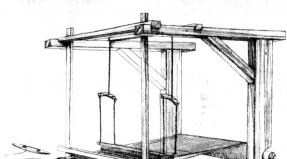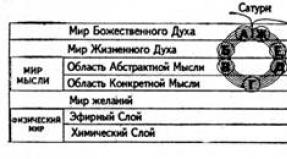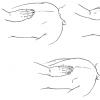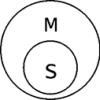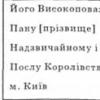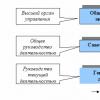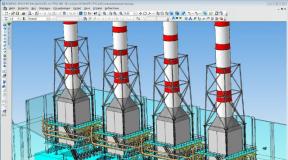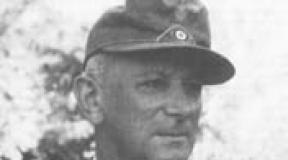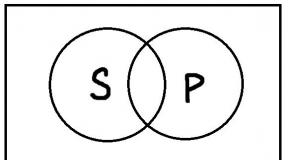Army of Italy. Incredible Italians' Adventures on the Eastern Front Italians on the Eastern Front Memories
In the first days of March 1943, the Italian troops began to hastily leave the territory of the Soviet Union. The so-called crusade against communism ended in defeat in the Stalingrad boiler. On the Eastern Front, Rome lost 175 thousand soldiers and officers. Before the war, Mussolini saw in the victory over the USSR the path to the restoration of the "Empire". However, as a result of the defeat on the Volga, the DUCH mode was overthrown, and after a few months the Germans occupied more than half of Italian territory. About how the "Russian Campaign" became fatal for fascist Italy, - in the RT material.
The key ally of Hitler's Germany in World War II is the fascist Italy, which possessed almost a five millionth army. However, several tangible lesions at the end of 1942 and early 1943 led to the collapse of the military car and the collapse of the dictatorial regime of Prime Minister Benito Mussolini.
One of the most severe tests for Rome became the defeat of the 8th Italian Army during the Stalingrad battle, which ended on February 2, 1943. On the banks of the Volga, the Italian fascists lost more than 80 thousand people (taking into account the missing). After the surrender in the Soviet captivity, up to 64 thousand soldiers and officers were.
A bad premonition was attended by Mussolini at the time when he only found out about the counter-offensive of the Red Army began on November 19, 1942 as part of the Uranian operation.
"Russia will never destroy. Her protection on its scale. Its territory is so huge that it can not be conquered or to hold. Russian chapter is finished. We must conclude the world with Stalin, "he reported in the letter Adolf Hitler.
In February 1943, Mussolini replaced almost the entire Cabinet of Ministers, and at the beginning of March gave an order about the conclusion of the surviving Italian troops from the territory of the USSR. For Germany, Rome's behavior actually meant a way out of World War II and turned into a need to start a new military operation.
"Shoulder to shoulder with Reich"
In the Soviet press, the fascist regime in Rome was visasal and the puppet of Nazi Germany. At one of the widespread campaign posters, Italy was depicted in the form of the right boot of Adolf Hitler, which was stuck in the Soviet Earth. In reality, the relationship between the two totalitarian powers was much more complicated.
Until 1941, the Trude (Chief) of the National Fascist Party of Italy Benito Mussolini was a supporter of the invasion of the USSR. In May 1939, Rome and Berlin concluded a "steel pact" - an agreement enshrined the military-political union of two powers. Italy pledged to support the Military Campaigns of the Fuhrer.
Mussolini understood the inevitability of the attack on the Soviet Union, but expected that aggression will begin after 1945. According to his logic, in the first half of the 1940s, Hitler had to strengthen the occupation regime in Western Europe and North Africa. By this time, Mussolini assumed, Rome will pull out the economy and the combat capability of the army. Otherwise, Italy could not be ready for a "big war."
Führer hid from a deadly developing a plan for the attack on the Soviet Union (Barbarossa) and was not going to call the Italians to the Eastern Front. Before the invasion of the USSR, a secret document dated December 18, 1940 was included in the hands of Italian intelligence, where the "Barbarossa" plan was described in general terms. As reported in the document, Berlin was calculated only for the help of Finland and Romania.
Hitler intended to take out the Italian army a leading role in North Africa and the Mediterranean region, where there was a confrontation with British troops. As historians believe, the plans of the Fuhrera hurt the pride of Mussolini. In addition, he was obsessed with the idea of \u200b\u200ba crusade against communism. As a result, Duchu achieved the consent of Germany to transfer the Italian troops to the Soviet Union.

After the start of the war with Moscow, the Ruor of Fascist Propaganda - La Vita Italiana magazine - published an article in which citizens have reported that "Italy stands on the first line shoulder to the shoulder with the Reich." Sending an expeditionary building "demonstrates the brotherhood in arms and Italian military power."
Mussolini himself argued that the path to the restoration of the "empire" (there was a modern analogue of ancient Rome) "passes through the Soviet Union." At the end of June 1941, at a meeting with the Cabinet of Ministers, Trude said that, having learned about the attack on the USSR, ordered "three divisions to Russia immediately". The dictator stressed that Italy "should actively participate in the New War."
Warriors Duche
The fascist regime did not participate in the invasion of the USSR on June 22, 1941. Three Italian Divisions ("Pasubio", "Torino", "Chelle") and the 63rd Legion "Talamento", consisting of black-workers (members of the armed detachments of the fascist party), appeared on the Eastern Front only in August 1941.
In the autumn, the Italian Expeditionary Corps (CSIR) under the command of General Lieutenant Giovanni Messe consisted of 62 thousand people. The presence of Italian troops in the Soviet Union was constantly increasing. In total in 1941-1942, about 280 thousand Italian soldiers and officers were thrown on the war from the USSR.
The combat capability of the Italian army on the Eastern Front was significantly lower than that of the Wehrmacht. The warriors were worse armed, equipped and motivated to combat communists. Italians have experienced an acute shortage of cars, motorcycles, armored vehicles and warm clothes. Problems with the supply and arrogance from the Germans affected their motivation and battle spirit.
"It was clear that ... The Italian army is not adapted to conduct hostilities in extensive Soviet territories - primarily due to the low degree of motorization of parts and in general poor technical security CSIR. Italians lacked spare parts and fuel ... Even the armament of Italians did not satisfy the necessary parameters, "the report of Professor of the State University of Gabriel D" Annunzio Mary Teresa Justia dedicated to the 75th anniversary of the Battle of Stalingrad.
In the spring of 1942, Mussolini was still full of optimism. The Italian dictator, like Hitler, was calculated to drastically change the situation on the eastern front in the summer campaign of 1942.
Duech strengthened the grouping from the mountain alpine areas in the USSR (Tridentin Division, "Julia" and "Kuneens"), which were considered more enduring in the harsh climatic conditions of the European part of the RSFSR. The Italian Expeditionary Corps was transformed into the 8th Army, which was named Armata Italiana in Russia (Armir).
After replenishing the number of Armir amounted to 229 thousand soldiers and officers. The task of the group was to hold a blitzkrieg in the Stalingrad direction. The role of the main impact force was assigned to the 6th Army of General Friedrich Paulus. Italians, Romanians and Hungarians acted mainly on the flanks, covering German connections that rushed to the Volga.
Forced evacuation
In the Stalingrad direction, the 8th Army faced with an incredibly fierce resistance of the Red Army, who constantly performed sensitive counterattacks. The resilience of Soviet soldiers and problems with the material and technical support, as Justa believes, finally undermined the combat spirit of Italians in the second half of 1942.
"The main part of these soldiers went to the east in a demoralized state, not wanting to fight there (many, moreover, just returned from the inglorious Albanian and Greek campaigns). It is known that along the way to the front, they repeatedly expressed themselves against the war from the USSR and protested in many ways, including damage to premises in the barracks, "said Justa in his report.
On November 19, 1942, the Stalingrad grouping of the Soviet troops began a counteroffensive (Operation "Uranus"). In mid-December, the 8th Italian army was completely defeated by the Germans. On January 31, the Soviet troops were captured by Friedrich Paulus, and on February 2, the grouping of the Wehrmacht finally capitulated.
In December battles, Rome lost about 44 thousand people, and a total of over 80 thousand Italians died under Stalingrad. According to various sources, the Red Army captured from 48 to 64 thousand soldiers and officers.
"Only during the operation" Small Saturn "(within the framework of the counter-offering near Stalingrad), the 8th Italian army lost killed, wounded, missing and frostbite over 114 thousand people," Candidate of Historical Sciences Sergey Belov said in conversation with RT , Scientific Secretary of the Victory Museum.
"Red Star" in the release of March 14, 1943 wrote that on the eastern front Mussolini regime lost 175 thousand soldiers and officers.
According to the Soviet newspaper, the fascist divisions carried heavy losses from the first weeks after the transfer to the USSR. At the end of August 1941, Division "Pasubio" and "Torino" lost more than 50% of soldiers and officers. By the winter of 1941, in the division "Chelle" almost all of the personnel died.
"In subsequent battles, the decline was so great that during the year of war on the Soviet-German front all three divisions of the Italian expeditionary building were replenished three or four times each time (changed. - RT.) up to 60-70% of personnel. In just this period, the Italians lost about 50 thousand of their soldiers and officers, "said the" Red Star ".

"The scale of the national drama is expressed in such statistics: 700 railway trains with soldiers went to the east from Italy, and only 17 returned. Other figures: 230 thousand mobilized warriors, 100 thousand fallen, 80 thousand prisoners of war - the residue from the army is not difficult to calculate. So the campaign of Mussolini in the "Protection of European Civilization", "said Justy.
As historians suggest, Mussolini ordered to evacuate the surviving parts of the 8th Army from the territory of the USSR on March 2-3, 1943, and the process of the troops continued from March 6 to May 22. According to the justi, among the soldiers returning to their homeland, there were practically no ideological fascists - the most fiery adherents of the ideas of Mussolini "burned" in battles with the Red Army.
Crash Italian fascism
As Belov believes, the evacuation of the Italian troops from the USSR could not save Mussolini regime. According to the expert, the crushing blow to the ambitions of the fascist Rome was applied not only under Stalingrad, but also in North Africa.
"The yield of Italy from the war in the fall of 1943 was due to both the situation on the fronts and the situation inside the kingdom. For three years of war in Africa, the Savoy Dynasty (formally fascist Italy was the kingdom) lost all his possessions on the Black Continent. In the sands of Maghreb, Somalia and Ethiopia, the Italians lost about 400 thousand people killed, prisoners and wounded, "said Belov.
By July 1943, the Italian military car was in a catastrophic position. Of the 32 divisions, which commanded at the Apennine Peninsula, were combined only 20.
At the same time, an anti-fascist movement was actively developed inside the country. The leading positions inside him occupied the Communists. In March-April 1943, over 100 thousand people participated in strikes across the country. Many Italian politicians, as well as the leaders of the United States and the United Kingdom, seriously feared the "Bolshevization" of Italy.
"The main reason for the collapse of the fascist regime was that he stopped laying most of the Italian elite. Its representatives were configured to get out of the war as soon as possible, albeit the use of the separate world, "Belov emphasized.
At the end of July 1943, Mussolini lost his post of prime minister and lost real power in the country. On September 3, the new government of Italy concluded a truce with the United States and the United Kingdom, and on September 9, she announced the surrender.
In response, Hitler ordered to introduce troops to Italy (Operation "Axis"). As a result of the special operation on September 12, Mussolini was liberated by German soldiers. Wehrmachut was also defeated by the British units located in the southern regions of Italy.

Führer refused to leave troops in the south of the Apennine Peninsula, believing that this region does not have a strategic value. By the end of September 1943, the Nazis occupied the North and Central Italy. In the territory-busy territory, a puppet state was formed - the Italian social republic led by Mussolini.
"The decay of the alliance between Berlin and Rome was generally poorly influenced by the course of events on the Eastern Front. For the occupation of Italy and replacing the divisions of former allies in France and in the Balkans, the German command used mainly troops placed in Western and Southern Europe. It deprived Hitler the opportunity to use them in the east. But at the same time, Italy's output from the war is not overlooking the substantial transfer of the Wehrmacht forces from the east to the south, "Belov said.
With the support of the British and American troops, the south of Italy turned into a bridgehead of the formation of anti-fascist armed forces - the movements of resistance and the Italian warring army. From September 1943 to May 1945, a civil war was in the country.
The Italian Social Republic was held only thanks to German military support. On April 25, 1945, this state ceased to exist, and on April 28, Mussolini and his mistress Clara Petachchi were shot by partisans.
"The death of his soldiers in distant steppes in the end signed the death sentence to himself. Until now, in the collective consciousness of Italians, his alliance with Nazi Germany and participation in the inglorious "cross campaign" against the Soviet Union is considered in the collective consciousness of Italians, "Mary Teresa Justy is underlined.
Hitler hid from his ally - Mussolini, preparation for war from the USSR to the attack itself on June 22, 1941. Only on the night before the attack, Rome was informed about this event. The Italian leader (Trude) immediately instructed the head of the Ministry of Foreign Affairs Chiano Galeazzo to inform the Soviet Messenger, that Italy, in accordance with it with the third Reich. "Steel Covenant" (German-Italian Agreement on Union and Friendship, signed in May 1939), declares the war to the Soviet Union. Letter A. Hitler with a proposal to send Italian troops to the eastern front of Benito Mussolini wrote personally. At the same time, he gave an order to prepare the Italian military contingent for the war from the USSR.
Mussolini was not against the war from the USSR - the "crusade" was his favorite idea. But Duchu believed that Italy would be ready for such a war no earlier than 1945-1950, when the programs of the rearness of the troops were completed, grow their combat capability. Germany's blow, with the participation of Hungary, Romania, Finland, when Rome did not even warn, not to mention the proposal to take part in the war, struck the status of Mussolini, Italy. In addition, the Italian leader wanted to get his share in the Share of the Bear Skins, and without the participation of Italian troops in the war, it was doubtful.
Hitler did not count on serious assistance to the Italian troops, a great knowledge of their price - Wehrmachut had already had to rescue the Italian army from the difficult situation. And therefore suggested focusing all the attention of Rome in the Mediterranean region, in North Africa.
But Mussolini insisted: "Italy cannot be absent on the new front and should actively participate in a new war," he said to his ministers. Interesting is the fact that the dead, like many other Western politicians, believed that Germany would win quickly during the "lightning war" and feared that Italian parts would not have time to experience a little. Consent to sending Italian parts to the Eastern Front Berlin only on July 10, 1941. For the war from the USSR, a special division was created: "Expedition Italian Corps in Russia" (according to Italian. Corpo di Spedizione Italiano in Russia, CSIR). It consists of 3-and divisions: the 52nd car transported infantry division "Torino"; The 9th Automobile Transferred Infantry Division "Pasubio" and the 3rd mobile division "Prince Amedeo, Duke d'Aosto" (Sometimes they call the Clarie Division). The word "car transportation" meant the fact that instead of special army equipment in the division, a variety of civil cars were used. Motor transported divisions consisted of 2 infantry regiments and the 1st motorized artpol, plus auxiliary units. The 3rd mobile division was part of the Kavopolka (3rd Dragun Cavolk "Savoya", 5th Ulansky Cavolk "Navarre"), 1-H Artillery regiment, 1-H Bersallers (with Ital. Bersaglieri - elite arrows They were equipped with bikes and motorcycles), San Giorgio's tank group - in service with a slight amount of L3 / 35 wedges, lung tanks Fiat L6 / 40 and anti-tank self-propelled artillery installations Semovente 47/32. The building also included the 63rd legion "TALLAMENTO" from T. N. "Voluntary Militia of National Security" (they were also called "BlackRruffs"). In total, there were 62 thousand people (3 thousand officers and 59 thousand soldiers), 5.5 thousand motor vehicles. Commanded the Corps General Giovanni Messe, who replaced the ill-called General Francesco Zinghesis.

The commander of the Italian Expeditionary Corps in Russia General Giovanni Messe (second right) inspects the transport part of the Division "Torino".
The corps arrived at the front in July-August 1941: at first, he was transferred under the command of the 11th German army. The background of Schobert was passed under the middle of August, in the middle of the tank group (then the army), the background of Claysta, the Italian corps stopped before June 1942 , then the Italian parts were transferred to the 17th Army of General R. Ruoff. Corps fought in the south of Russia - in Ukraine.
In the war, part of the corps joined in August 1941 - as part of the 11th Army tried to impede the dishonor of Soviet troops, which were between the rivers of the South Bug and Dniester. In the composition of the tank group, the Italians participated in the seizure of Stalino (now Donetsk) and the occupation of the nearby cities of Gorlovka and Ordzhonikidze (now G. Enakievo). Some corps divisions participated in the occupation of the territory around Odessa. Initially, the Italians had a high moral spirit - Wehrmacht won the victory, they were "winners" in the "light campaign." But soon - by winter, the decline of the martial spirit began, the lack of uniforms, artillery, other weapons began to be felt. The supply went through the Wehrmacht, who himself was not ready for a long war, so the Italian body was supplied according to the residual principle. As a result, the Italians began to make it, and even German warehouses were robbed. In relation to the local population, the Italians were the most "tolerant" were not marked in atrocities like the Germans, Hungarians, Romanians. So, General Messe, even created his qualifications on atrocity and had the following gradation of cruelty to the local population: "1st place - Russian White Guards; 2nd place - Germans; 3rd place - Romanians; 4th place - Finns; 5th place - Hungarians; 6th place - Italians. "
Italian soldiers with parishioners and priest on the porch of the church. Pavlograd, autumn-winter of 1941.
Italian soldiers are buying something from local residents at the Ukrainian railway station. Winter 1941-1942.
But Mussolini himself got into this war and so when Hitler demanded to increase the Italian forces on the Eastern Front, was forced to send additional forces, bringing Italian forces to the field army - the 8th Italian Army was created ("Italian army in Russia" - Ial. Armata ITALIANA IN RUSSIA, ARMIR). A total of 7 divisions were sent to Russia, bringing Italian forces to 10 divisions, not counting the auxiliary units. These were: 2nd Infantry Division "Sfororesca"; 3rd Infantry Division "Ravenna"; 5th Infantry Division "Koszeryia", 156th Infantry Division "Vicenza" (2nd Army Corps), and an elite Alpine Corps in the composition of the 3-Alpine Divizions - 2nd "TRIDENTIN", 3rd "Julia" And the 4th "Kunienze". The army also included 3rd Brigades of "BlackRruffs", 1-to Croatian Volunteer Brigade and 2-German Divisions (298th and 62nd). In total, there were 235 thousand people in the army, there were about 1 thousand guns on its weapons, more than 400 mortars, 17 thousand vehicles, a slight amount of light tanks and SAU (approximately 50 units) and 64 aircraft. Commanded the army of General Italo Gariboldi, Messe opposed the increase in Italian forces on the Eastern Front and was shifted from office.
The Italians endlessly finished their "Eastern campaign": during the battle for Stalingrad, in the fall of 1942, the 8th Italian army occupied positions on the Don River (plot of more than 250 km), North-west of Stalingrad. In December 1942 - January 1943, the Italian army was actually destroyed during the onset of the Red Army - more than 20 thousand killed, 64 thousand. Completed, those who could move were completely demoralized. The survivors were allocated to Ukraine, then the German command sent most to Italy. After the coup in Italy came, Mussolini arrested - several thousand Italians remaining in Russia for the protection of rear communications were disarmed, then shot by the Germans. The Glory of the Italians in this war did not raise - showing themselves weak fighters, not ready for this war.
Sources:
Jowett F. Italian army. 1939-1943. European Theater of Military Action. M., 2002.
J. Messe. War in Russian Front: Italian Expeditionary Corps in Russia. M., 2009.
Safronov E. G. Italian troops on the Soviet-German front. 1941-1943. M., 1990.
I have already written somehow that in May I have several times the interest in the history of the Second World War. I want to watch movies on this topic, learn photos and read. And in this May I absolutely accidentally came across the book of the Italian author, without sticks telling about the life on the other side of the front line. That is, about how they fought, and if we express more accurately, as the Alpine arrows were receded from the banks of the Don under the onslaught of the Red Army.
Before moving to the story about the author and book, I want to note that on the network you can find as a separate story "Sergeant in snow", which is included in the Italian school program and is awarded the Italian literary premium "Bakarkellla", whose laureates at various times were Hemingway, Pasternak and Umberto Eco and a more volumetric edition: "Favorites", in which, in addition to Sergeant, is incorporated by several more interesting stories and stories, in general, on the same topic. I read an extended edition.
So, first of all, it is an autobiographical story. In early 1942, the twenty-year-old Sergeant Mario Rigoni Stern turned out to be in Russia as part of the expeditionary Italian corps directed by order of Mussolini to help the troops of fascist Germany. By the way, just today (July 10), exactly 73 years since its creation (in a year since July 1942, after replenishing and re-formation, changed the name on the "8th Italian Army"). By this time, the army has already been published on the line passing on the Right Bank of Don (Voronezh and Rostov region). The situation for the Italian troops, stretched along Don, remained stable until the Soviet troops on December 11, 1942 began the Saturn operation. The purpose of this operation was the destruction of the positions of Italian, Hungarian, Romanian and German troops on Don. The first stage of the Saturn surgery is also known as the operation "Small Saturn". The purpose of this operation was the complete destruction of the 8th Italian Army. As a result, under the onslaught of shock groups of the Soviet Voronezh Front in January 1943, the Alpine divisions were cut off from the retreating parts of the crushed 8th army and were surrounded. Everyone was saved as he could. In the story "Sergeant in the snow" tells about the path of Sergeant Stern to their homeland, a considerable part of which he overcame on foot, in a 30-degree frost. Twice it was in German concentration camps for prisoners of war. Upon returning to the native seats in the spring of 1945, he assisted to the partisans, cleared mountain areas from the gang of blacklores and the German occupation parts. These events are also in one way or another are described in other stories and the audience of the author.
Separately, I would like to mention and the story "Return to Don". She was written in peacetime and it tells it about how Stern managed to come to Russia once again and walk in the same places where his comrades were killed, hunger and frostbite. It is written very deeply and, in my opinion, even the emotional "sergeant".
Why did this book signed me? Let's start with the fact that there are so many familiar names of small farms and villages on the middle Don, in many I have been, and reading what happened here in the 1942th, somehow much brighter it turns out to transfer events from the book to the real scene. I literally see this frozen white tape of Don, on the shores of which opponents swore, incredibly clearly imagine these blockages and trenches, dug in the chalk breed, just feel this ice, penetrating the wind ... Secondly, it was always interesting how much domestic The conditions for our and "harsh", how strictly there was a discipline, strong propaganda, whether there were cases of the manifestation of real heroism, akin to the fact that they were committed by the Red Army. On this book almost everything, below the selection of photos of the soldiers of the 8th Italian army with small comments and quotes from other military memoirs. The book, they, perhaps, will not replace, but all the same will give a little idea of \u200b\u200bwhat happened to the Alpine arrows who came to our land.
03
. There is a version that not by the victorious adventures of Italians in Russia began already in the first days of their travel to the front. Italian lieutenant E. Spaggiari in his book "With Ksir in the Russian Front" writes: " Our echelon composed of 1200 Italian soldiers of the 81st regiment of the Division "Torino" was to do a long way from Rome to Yasinovaya Station in Donbass for changing Italian parts. We had to overcome about 3000-3500 km. We planned to do this for 6-7 days, having left the railway on the railway on December 1, 1941. In Rome, we were given bread for two weeks of the road. But this journey lasted 30 days at a temperature of 30 ° C on the street and - 14 ° C in the car. After all, when our train reached the Brennero station on the border with Reich, the Germans took the Italian composition, replacing it with their: Therefore, for almost a month we spent 16 hours a day in the dark, without kitchen, water and toilet. When we reached Soviet territory, the difficulties were created by the Russians, but the Germans. For our "allies" we had, at least, uninvited guests. At each station, we took the locomotive and drove the echelon to a dead end. Once 6 days we stood in a clean field, without seeing a single person immersed in MGLU. Cigarettes and bread ended, and we began to steal. At one of the stations, the Germans in the Germans stole the lanterns at the station to illuminate their wagons, but they discovered the loss and began to spend searches in the wagons, unceremoniously occurring forged boots on the lying Italian soldiers. They behaved in relation to us, as winners among the defeated occupied country» 
04
. « At the end of the way from 29 to December 31, 1941, a sanitary inspection of the arrivals of Italians was conducted in Yasinovaya. Of the 1200 soldiers, only 275 as a state of health turned out to be combined. But how were they armed? There were 145 rifles, of which 19 were faulty, 4 manual machine guns - 1 did not work. The temperature in the Donbass dropped to - 44 ° C. Our hand grenades like "Breda" at a temperature of about - 25 ° C were not exploded (1 out of 10 triggered). And at temperatures below - 30 ° C, they did not explode at all, turning into a simple stone, then we used the garnet body as a cigarette, 20 cigarettes like "national" was placed in it. As a lieutenant, I had to have a personal weapon - a gun, but I did not give it to the rear or on the front. Then I offered to pay for a gun, but to no avail. I asked the Carabiner, but the major said that he was not allowed to me on staff. Instead of a pistol, I was given 6 grenades like "Breda". I served in the Russian front for 5 months and every two weeks, together with the captains of Naoletano and Rosseti, wrote reports to the authorities demanding to replace bad weapons, but to no avail" Pay attention to the bundles of the roasting feathers on the helmet of soldiers. These are elite Italian units. So-called Bersaliers. 
05
. The landing from the echelons occurred at a significant distance from the Italian base in Millerovo, and the parts were without food. Cannedish, issued by dry soldering, soon ended, and German commandants refused to supply parties. Italian battalions moved along the villages as a locust, looking for products from the population that did not have time to capture the Germans. Attention to poultry from the soldiers of the Italian royal army was immediately noted by the population. The nickname "Soldier-Jurik" firmly fixed them. It was associated not only with the unusual view of Italian soldiers in wide cough overcoat, from which legs stick out in the windings, but also with the reinforced extermination of the feathers. 
06
. In August 1942, the Italians took defensive positions along the Don from the Voronezh village of Belogoria to the mouth of the Hoper River, the south of the famous Sholokhov village of Voshenskaya. On the left flank interacted from the 2nd Hungarian Army, and on the right - with the 6th German. The width of the defense front of the 8th Army was 270 kilometers. " Our bunker - writes Rigoni Stern - was in a fishing village on the bank of Don. Firepoints and moves of messages were separated on the slope, descended to the shore of the frozen river. On the right and left, the slope passed into the shallow shore, covered with dry grass and cane protruding from under the snow. Behind the head of the coast, the right - the Bunker of the Morbeno battalion, on the other hand, the Bunker of Lieutenant Checky. Between me and Checky, in the destroyed house, - separation of Sergeant Garrone with a heavy machine gun. Before us, at a distance of less than 500 meters, on the other side of the river, the bunker of the Russians. Where we stood, there must be a beautiful village. Now only brick tubes remained from houses. The church is half destroyed; In its surviving part - the headquarters of the company, an observation point and a heavy machine gun. When we were digging the moves of messages in the gardens, in the ground and snow found potatoes, cabbage, carrots and pumpkins. Sometimes they were still in food and then fell into the soup. The only live creatures remaining in the village were cats. They wandered through the streets, hunting on the rats that were everywhere. When we went to bed, the rats climbed to us under the blankets. At Christmas, I wanted to roast a cat and make a cap from her skins. But the cats are cunning and did not fall into traps» 
07
. Armament of alpine divisions was adapted for action in the mountains. They did not have artillery of large calibers, mountain cannons were transferred in Blades. The main force of the alpine parts were mules. 
08
. Before sending to the front, the divisions passed a reinforced training in motion on the plain. However, everyone was confident that the ultimate goal of the Alpine Corps was Caucasian Mountains, so the mountain arrows took the rope, wedges, alpenshtoks and other property. As one Italian officer later wrote, Alpenshtoki was very useful to them ... to sow heads of churars and ducks in Ukrainian villages. 
09
. Warm uniforms ordered in Romania began to go to the front only after December 15, and it was issued only to officers and clocks for carrying a guard service. Most of the soldiers continued to walk in wide and short chinelles, absolutely not adapted to frosty weather. The most vulnerable site of uniform was shoes. Army boots, shoven according to the requirements of the Italian charter, 72 nails, were instantly intality and squeezed the legs with ice visits. Between the nails, the snow was stuffed, which forced the soldier to be fed to the equilibristics. This caused ridicule of villagers and discontent Italian officers. 
10
. 14-15 December 1942, as evidenced, at that time, there were still enough adult teenagers, our soldiers shouted Italians: "Tomorrow you will be boiled!" In response, the Italians disengaged carelessly: "Ivan! What for? We live well! " On December 16, 1942, in line with the General Plan of the Soviet High Command on Surrounding the 6th German army in Stalingrad on the flank grouping of the enemy (including the 8th Italian Army), a powerful artillery-bomb strike was applied. Then the land forces went to the offensive. In the 2nd half of December 1942, the troops of the South-Western Front and the 6th Army of the Voronezh Front with powerful blows from different directions forced the enemy, which lazed large losses, leave well-fortified defense on the right bank of the Don from New Kalitva to Morozovsk and move off for the iron The road on the Kantemirovo site is Millerovo. 
11
. Here is the Italian officer of Korradi in his diary "La Ritirata Di Russia" (departure from Russia) recalled the breakthrough of the Italian front: " On December 17, 1942, driving into the last minute, I did not understand the grandeur just started a military catastrophe ... The command of the 2nd building left the halter to cantems. After long searches we found the road to cantems. 20 years have passed, but I perfectly remember the Kantemirovka road - Talah. She was completely empty and sparkling from ice, she glistened under the morning sun. In a few tens of meters, we saw inverted trucks lying on both sides of the road, pits formed from explosions, heaps of things and boxes from which ammunition fell out; In the air felt smoke from fearful fires. The corpses of Italian and German soldiers were lying. On the fields along the road lay dozens of people challenged from the air. On the road, the corpses were in most fragmented, mixed with ice ... In one village, the road turned a little, and fifty wounded women cleared it from snow. They saw our car and began to scream, highly raising brooms. Shouted with a mockery: "Tikay! Tikai! ". "Tikai" - in Russian means "running out" or just escape, I do not know. We arrived in the cantems in the middle of the night ...» 
12.
As a result, the first days of the offensive of the Soviet troops were broken by the fortified strip of the Italian defensive line along the Don and disseminated to the front of the 8th Army. All of her divisions rapidly rolled back. Service summary of the South West Front, which summed up the fights, read: "On the right flank of the front from New Kalitva to the Bocontian opponent began the ubiquitous departure, hiding behind the terrigard battles and private counterattacks of the newly approached parts from the reserve. In some sections, the enemy's waste moved to a disorderly retreat. " 
13
. From the memories of Oterchenkova Sergey Andreevich, commander T-34 170th Tank Brigade: " They came to the area, never forget, the Cossack farm bread. In 3 kilometers, another farm - Petrovsky. He was also taken by Soviet tanks, but not our brigade. Between the farms located on the hills, the nizin ran. Early in the morning on it, a huge solid crowd went, fleeing from the environment, the 8th Italian army. When the advanced parts of the Italians were filled with us, the team "Forward! Put pressure! " That's then we gave them from two flanks! I have never seen such Mass. The Italian army was literally labeled to the ground. It was necessary to look into our eyes to see how much anger, hate, then we had! And crushed these Italians like bedbugs. Winter, our lime tanks are painted in white. And when from the battle, the tanks have become below the tower red. As if swam in the blood. I looked at the caterpillars - where the hand stuck, where a piece of skull. The spectacle was terrible. Took crowds of prisoners on this day. After this defeat, the 8th Italian army actually ceased to exist, in any case, I did not see a single Italian at the front anymore.» 
14
. January 26, 1943, after a heavy battle, whose culmination was the fight under Nikolayevka, the rest of the alpine divisions broke through the environment and moved to new defensive positions. By this time, the only division that preserved some combat strength and still participating in the battles was the Diecenin division. The remains of the cash of the Italian troops were frostable, sick and demoralized. 
15
. From the memories of the captain of the Spanish Army and Lieutenant (translator) of the 8th Italian Army, in the past Captain of the Tsarskoy Army A.P. Stemchuk: " We met on the road a lot of Italian troops, rising machine guns on manual sledding. In the courtyard of the commandanttia in Enakievo, soldiers were expected, reminding the painting of Vereshchagin "Departure of the Napoleon Army" - in women's coats, fur coats, wrapped with scarves and female scarves, many on the legs with rockets for walking in the snow - and everything is almost without weapons». 
16
. Most of the dead and dead alpians were buried by the local residents only in spring when it began to go snow, and the danger of epidemics appeared. There are no exact accurate data on the losses of the Italian army. It is known that the 8th Army arrived on the Eastern Front of about 260 thousand people. About 40 thousand people returned to Italy. During the fighting on the territory of the Rostov, Voronezh and Belgorod regions, at least 15 thousand Italian soldiers and officers died. 
17
. About 60 thousand soldiers were captured. According to the Italian side, 10,300 people were subsequently repatriated. The rest died in prisoners of war camps from diseases, wounds, frostbite, etc. 
Based on:
-
A few months ago I had a chance to see the picture "Choosing Captain Corelli", put on the novel Louis de Bernier. Honestly confess, the film is really worth. Because when they raise the topic of war crimes, most often they speak either about Lochokost, or about the shootings of the USSR citizens; At worst - about Katyn. Nevertheless, it was not so smooth and in the Nazi union camp "Axis", which included Italians, Romanians, Hungarians, Finns and the Japanese. Today, few people know that the allies of the Germans Italians were often subjected to offensive jokes. Hitler attributed Italians to an infallible Mediterranean race and did not consider them worthy of respect. And this despite the fact that both countries were the most strong allies before the start of the war. Mussolini in the 37th said in Berlin: "Italian fascism has gained a friend with whom will go to the end." Could the sentence imagine that both parties will be after the Stalingrad battle by traitors in relation to each other? The result of disagreements in the countries of the axis was the fact that Wehrmacht decided to execute Italian soldiers. The most striking of them became the famous Kefalon massacre; The second name is "Akvi Division Sign." 
Italian prisoners of war on about. Kerkira. 1943
Stalingrad battle has become a fundamental fracture during the entire World War II. A third of the Germans hit the Soviet captivity, as well as several thousand Italians, Romanians and Hungarians for whom Stalingrad became a trap. The Germans' allies were armed significantly worse, so there was no difficulty to defeat their parts for the military leadership of the country. It was important to cut off the Germans from oil fields, without which Germany could not continue the war.
The defeat of Stalingrad strengthened the fermentation and antihytler sentiment in the ranks of the axis countries. And if Japan, after the Midwearsky slaughter, did not want to put up with a defeat and continued to fight to the victorious end, the European allies of Germany had already seriously began to think about how to throw the owner and fold the weapons to get out of the ravis.
Italy, being the main thing not so much military as a political ally, the first spoke about the addition of weapons. Having nicely starting the Balkan campaign (Mussolini managed to capture Albania), in Greece, the Italians were bogged down for a long time and eventually broken. Balkans are not Ethiopia, where the use of old weapons Italians rather helped. The European Theater of Military Activities was for Italy inexpervailing nonsense. Unprecedented Mussolini Military Reform, weak personnel training of the military - all this has affected the general result of Italian hostilities in Europe. 
Kefalonia: Monument of the Fascist Movement of Resistance
Calling the Nazis with the fascists, the communists specifically put the shadow on the woven. They made two arbitrary generalizations at once. The Communists united national socialists with the fascists in Italy and in Spain. They arbitrarily declared the fascists of the members of the most ordinary "bourgeois" governments. For example, the Government of Germany, which there was no turn of fascist. And it turned out that the Nazis were not at all socialists, but the hell knows who. Some stupid man.
Fascists in Italy and in Spain (phalanxists) were conservatives. Their goal was to rally a nation in Fisho - a bundle. Due to the growth of corporate start, the collapse of the democratic freedoms, the fascists wanted to preserve the conquest of the XIX century civilization. Fascists sought to preserve the traditional society. As Mussolini wrote, "For fascism, a person is an individual, one with a nation, fatherland, who obeys the moral law to connect individuals through a tradition, a historical mission."
Socialists wanted to realize utopia, to build an ideal society on theoretics invented theorists. And the fascists wanted at any cost not to allow them. Therefore, when the prisoners of German soldiers in Russia called the "fascists", they, to put it mildly, were surprised.
- We are not fascists, we are Nazis! They answered them quite motivated, and the Soviet people finally came the mind for the mind.
What a fog reigned in the heads, shows at least such a fact: the head of the Russian fascist party V.K. Rodzaevsky recognized Stalin with a spontaneous fascist. He wrote from Manchuria letters I.V. Stalin, and then went to Moscow. As it should be said, since then no one has ever seen him.
The Nazis united with the fascists recognition of the conservative basics of life and following the historical tradition. With the communists, they were united much greater. 
After the defeat of Greece in April-May 1941, the country was divided into German, Italian and Bulgarian occupation zones. The Italians occupied part of the mainland Greece and most of the Greek islands. The Cefaline Island garrison from May 1943 became the Italian 33rd Infantry Division "Akvi". The division has numbered 11,500 soldiers and 525 officers and consisted of two infantry regiments (17th and 317th), the 33rd artillery regiment, the 19th and 27th legs of the blacklores and auxiliary divisions. Division has coastal batteries, torpedo boats and two aircraft. In addition, the 18th regiment of the division was housed on the island of Kerkira. On June 18, 1943, the Division command took the 52-year-old General Antonio Gandin, who received the German Iron Cross on the Eastern Front.
After the success of the allies in Tunisia, the Germans decided to strengthen their presence in Greece, thereby taking action in case Italy concludes a separate world with allies. On July 6, 1943, the 2000 soldiers of the 966th Grenado Regiment arrived at Kerkira headed by Colonel Johannes Barge (Johannes Barge), reinforced by the 810th and 966 ginseal battalions, batteries of self-propelled guns and nine tanks.
After the truce concluded in September 1943, General Handin, General Gandin, was in front of the dilemma: to surrender to the Germans - who were already ready for surprises and began disarming Italian garrisons in other places - or resist. Gandin requested instructions from the authorities and began negotiations with Colonel Barge.
On September 8, 1943, on the day, when the truce was made public, General Vecchyarelli, who commanded the 170 thousandth Italian occupation army in Greece, sent a telegram to the General Staff, with a copy of Gandina. Vecchyarelli ordered to attack the Germans only if the latter attack Italian troops. The order indicated that the Italians should not "act together" with Greek partisans and even with the allies, if they fall down in Kefalonia.
In case of the attack of the Germans, the order of Vecchyarelli did not give clear instructions, he was based on the Badolo directive that the Italians should answer with the "maximum determination" to any threat from any side.
Thus, the order still provided that the Italians should resist the attack of the Germans on them, but it was not said right about it. At 22:30 of the same day, Handin received an order directly from General Ambrosio, to send its military and commercial vessels in Brindisi immediately, as required by the condition of the truce. Gandin fulfilled the order, thereby losing potential means of salvation. Complicating even more atmosphere, Badolo agreed, after the overthrow of Mussolini, to unite two armies near the German command, in order to calm the Germans. Thus, Vecchyarelli and Gandin were under the German command, although Italy concluded an agreement on truce with the allies. This gave the Germans to the right to consider Italians, if they are unpleasant to orders, rebels.
On the morning of September 9, Gandin met Barge and misled him, stating that he did not receive any orders. Two officers liked each other. They had a lot of common, Gandin was set up properly and loved Goethe. It was the pro-harm orientation of Handin that the general of Ambrosio sent him from Italy to Akvi Division, fearing that he could stand on the side of the Germans, against the conspiracy in order to overthrow Mussolini. The officers diverged in good relations, agreeing to wait for orders, and having agreed that the situation should be permitted peacefully.
Where the gentle sun and the warm Mediterranean Sea merge into the picture of serene everydays, suddenly cracks of German machine guns. These are soldiers of the Mornetral Division "Edelweiss" shoot their former allies on the island of Cefalinia. They punctually put Italians in a row of 8 people - and kill them in emphasis.
"Akvi division slaughter has become one of the largest mass executions in history - in just one week in September 1943, 5,000 captive Italian soldiers and officers were shot on the island.
"The Germans bypassed us, offering medical care to the wounded. When about 20 people crawled forward, a machine-gun volley finished them "
From the memories of Kapellan Romualdo format, one of the few survivors in the island of Kefalonia. 
Telegram Y. Barge
On September 11, the Italian Supreme Command sent two clear instructions of Gandina that "German troops should be considered as hostile", and that "against the attempts of disarmament by German troops need to resist with weapons." On the same day, Barge passed Gandina Ultimatum, providing him with one of three decisions:
1. Continue the struggle on the side of Germany
2. fight against the Germans
3. Peerly pass weapons
Handin issued an ultimatum for discussion with his senior officers and 7 chaplains. Six Kapellanov and all senior officers advised him to take the direction of the Germans, while one of the chaplains suggested immediately to surrender. However, Gandin could not agree to join the Germans, as it would be against the King's order, according to Badolo's information. He also did not want to fight against them, because, he said, "they fought with us and for us, side by side." On the other hand, the transfer of weapons violated the spirit of the truce. Despite the orders of the bet, Gandin continued the negotiations.
Handin agreed to bring his soldiers from a strategic position on the Mount Kardakata, the "nervous center" of the island, in exchange for the promise of the Germans not to deliver reinforcements from mainland Greece. On September 12, Gandin said that he was ready to pass Aquave weapons, according to the report of Colonel Barge to his superiors in the XXII Horus.
However, Gandin was under pressure from junior officers who did not want agreements with the Germans and threatened the insurgency. The 18th regiment of the Akvi division on the island of Kerkira at midnight on September 12-13 reported on the radio that they rejected the agreement with the Germans. Gandin received information from reliable sources that the surrendered soldiers were deported, and not repatriated.
On September 13, the German convoy of 5 courts approached the capital of the island, Argostolion. Italian artillery officers, on their own initiative, ordered the remaining batteries to open fire, sterling 2 German landing ships. Died 5 Germans.
On the same night, Handin appealed to his troops with a survey, in fact, which contained the same three options to him:
- join the Germans
- surrender and be repatriated
- to resist the German troops
The answer of the troops was in favor of the third sentence by a majority vote, but there is no information about the exact numbers of this majority. On September 14, Handin refused an agreement, offering to pass only heavy artillery so that the Germans left the island, demanding an answer at 9:00 the next day.
On September 11, 1943, the Supreme Command of the Wehrmacht (OKW) issued an order to disarmament and sending to the camps for prisoners of war of fascists, Italian soldiers and officers who refused to go to the German service.
The Germans were ready to resolve the issue of force, and provided the Italians an ultimatum, whose validity period was expired at 14:00 on September 15. On the morning of September 15, the German aviation began the bombing of the Italian positions by the Junkers JU 87 bombers. On land, the fascists originally had superiority, and were captured by about 400 Nazis. However, on September 17, the Nazis landed the "Hirschfeld combat group", consisting of the III./98 and the 54th mining battalions of the elite first mining division, together with I./724 HECHERSKIY BATALOON (104th Hanger Division (Germany)), under the command of Major Harald von Hirschfeld. The 98th Mornetral Regiment, took part in many atrocities in relation to the civilian population of Epirus in the months of the Akvi Priority. At the same time, the Germans began to scatter leaflets, calling the Italians to capitulate. The leaflets said:
"Comrades Italians, officers and soldiers, why are you fighting against the Germans? You betrayed your leaders! ... fold the weapon !!! The road to home will be opened by your German comrades. "
Gandin has repeatedly requested help from the Military Ministry in Brindisi, without receiving an answer. He even sent a Red Cross to the Ministry of Emissar, but when he arrived in Brindisi three days later, it was too late. The 300 aircraft of the faithful Badolo were located in Lecce, in the south of Italy, within the radius of the reach of Kefalonia, and were ready to intervene. But the allies did not allow departure, fearing their transition to the side of the Germans. In addition, the two Italian destroyers who followed Kefalonia were ordered to return for the same reasons.
The massacre began on September 21 and continued for one week. After the Italian surrender, Hitler issued an order that allowed to execute any Italian officer who resisted, "for treason,", and on September 18, OKW issued an order that "because of the insidious and treacherous behavior of the Italians on Kefalonia, the captives do not take." Gebirgsjäger soldiers began shooting Italian prisoners from four to ten. The Germans first killed the Italians surrendered in place, using machine guns. When a group of Bavarian soldiers objected to this practice, followed the threat of their own execution. After that, the captive fascists were transferred to the municipality of San Teodoro, where they were shot by groups of 8 people.
The first was shot by the commander of the Akvi division - a convinced fascist, General Antonio Gandin, awarded by an iron cross for his feats on the Eastern Front. Before death, he threw the German award in the dirt in the hearts ...
There were no honors from the former allies - first they flew out of machine guns, then the calculating Germans became sorry to spend the cartridges, and knives went into move. The bodies of the killed officers dumped into the rafts, taken out in the sea and blew up with 20 living Italian soldiers who were on them.  Monument to the killed Italian soldiers-fascists on about. Kefalonia
Monument to the killed Italian soldiers-fascists on about. Kefalonia
So manyhow hatred in relation to his yesterday's allies is simply explained: In September 1943, Mussolini regime fell under the blows of the Anglo-American troops in Italy, the Germans immediately occupied part of the country and disarmed the Italian army.
Alas, no thanks or at least the share of respect for the former allies and the faithful vassals of the Third Reich did not receive - massive executions of the prisoners of Italian soldiers everywhere: at the Greek Islands of Kefalinia, Kos, in the Balkans, in Albania ... was shot in full-scale the Italian garrison of the city of Lviv. On the territory of Poland, the Germans were destroyed by more than 20,000 Italian soldiers.
Mavr did his job. Mavr can leave.
"The cars came in the morning and stopped along the campground. Italians faced cars. They were ordered to fold the weapons into the goats and move aside. Then they were drowned by the back of the death gorge and shot. Among the soldiers were officers "
- From the memories of the prisoners of Yanovsky concentration camps, which was under Lviv.
Events in Kefalonia were repeated, to a lesser extent, in another place. On Kerkira, an 8-thousand Italian garrison consisted of three divisions, including the 18th regiment of Aquies. On September 24, the Germans landed on the island (under the characteristic code name "Treason Operation"), and the next day they were able to force the Italians to surrender. All 280 Italian officers on the island were executed within two days, by order of General Lanz, in accordance with the Hitler directive. Bodies were thrown into the sea. Such executions of the officers also occurred after the fight for the island of Kos, when the Italian commander and 90 of his officers were shot. In October 1943, after Mussolini was released and created the fascist republic in northern Italy, the Germans provided the rest of the Italian prisoner three choices:
- Continue the struggle on the side of Germany
- Forced labor on the island
- Concentration camps in Germany
Most Italians preferred the second sentence. In January 1944, Benito Mussolini received a report of Kapellan after Aurelio Garobbio, the Swiss fascist from Italo-tongue canton Ticino, informed him about events. Mussolini was furious what was made by the Germans, although he considered Aquave officers, more than her soldiers traitors. Nevertheless, in a conversation with Garobbio, after the latter noticed that the Germans did not show mercy, he said: "But our men defended themselves, you know. They sowed several German landing ships. They fought as the Italians know how to fight."
In 1950, the remains of about 3,000 soldiers, including 189 officers, were exhumed and sent to Italy for burial in the Italian cemetery of the war in Bari. The remains of General Handdin have never been identified.
The massacre was largely ignored by the press and the ITALY Education system until 1980, when President of Italy Alessandro Percini, a former Italian partisan, visited the Hemorial in Kefalonia. Despite the recognition of the event's events, only in March 2001, another President of Italy, Carlo Champi, visited the memorial again, most likely, under the influence of publicity, generated by the upcoming output of the Hollywood film "Mandolino Captain Corelli" during the Champs ceremony, speaking about the soldiers of Akvi Division , stated that "their conscious decision was the first act of resistance from Italy liberated from fascism, and that they preferred to fight and die for their homeland."
Akvi Division Case has become the subject of new studies and is rightfully considered a bright example of Italian resistance during World War II.
The presidents of Greece and Italy periodically take part in the solemn ceremonies taking place in Kefalonia at the Akvi Division Monument. The scientific conference on the Boyne was held on March 2-3, 2007 in the city of Parma Greco-Italian Kefalonian society contains an exhibition called "The Mediterraneo Exhibition", next to the Catholic Church in Argostoli, where photos, newspaper articles and documents demonstrate the story of the slaughter.
Evidence testimonies:
AD Petrushkova, who worked during the German occupation of Lvov by a translator in the Italian team "Retrova Italian":
"After the fall of Mussolini, the fascists demanded from Italian soldiers who were in Lviv, the oath to the loyalty of Hitler's Germany. Many refused and were immediately arrested. A total of 2,000 people were arrested and shot. Among the shot 5 generals and 45 of the officers of the Italian army, which I knew personally.
Former employee of the mission on repatriation of Soviet citizens (Paris) B.M. Goglidze, in the fall of 1943:
"In the empty artillery warehouses and bunkers, which were near the city of Ordruff, in the direction of the village of Kravinkel, brought and placed 3-4 battalions of Italians, which were soon shot. In the spring of 1944, the remains of the shocked decided to destroy, to make it commissioned a branch of Buchenwald concluded from nearby. When opening the graves, the prisoners saw the corpses dressed in the Italian military form "
In Lviv, the executions of the Italians spent the soldiers of the Wehrmacht. Excirations lasted two months. According to the Emergency Investigation Commission, about 10,000 prisoners of the Italians were shot in Lviv. Former Lvivanin Vladislav Weber imprinted in his children's memories that "after executions on ravines between Lisairens held blood" shot "shot of the Italians.
Legal aspect.
The execution of captured servicemen is prohibited by the Geneva and the Hague Conventions on the conduct of the war, so the victims among those who surrendered military personnel cause a significant public resonance.
Shot by the Nazis of fascist soldiers and officers:
As a result, 6,300 fascist soldiers and officers were shot by the Nazis in the Balkans, and more than 17 thousand sent to the camp for prisoners of war.
In total, about 22,600 fascist soldiers and officers were destroyed on the territory of Poland Nazis.
In September 1943, 4.500 fascist soldiers and officers were shot by the Nazis at the Mediterranean Islands of Kefalonia and Kos.
Shots:
In mid-September 1943, in the Balkan Peninsula and Islands of the Mediterranean, in Epirus, in Greece.
September 23, 1943 in Castoria (Northern Greece, Greek Macedonia) shot 1,200 fascist soldiers and officers of the garrison of Kostosts (24th Infantry Division "Pinerolo").
On September 28, 1943, 28 fascist officers were shot on the island of Corfu.
In early October 1943 in the city of Saranda (Albania) - 130 officers of the fascist division "Perugia".
In Deblock, Hellno, Toruni, Biala Podlaska, Przemysla and other camps.
In 1943 in Lviv in the Citadel itself (Nazi concentration camp for fascist officers "Stalam 328") and in the Upper Lychakov, as well as barracks on the street. Copernicus, where the team of the rear of the Italian garrison "Commander Retro Del eats" was temporarily - the Italian officers were shot, and the Italian soldiers were shot on Pogulanka, small krivchitsy Lisinich and near the village near the village, as well as in the concentration camp in Rave-Russian ("Stalan- 325 "). In 1946, in the Nuremberg process, the list of Italian officers was shot in Lviv. 
Part two. Romanians.
The war in the presentation of these Shakalov looked like robbery in the captured territories. The Romanian army was completely unable - they came only to loss up what was not burned or was not captured by the Germans, and at the same time to resolve their territorial issues at the expense of the land of Ukraine.
It is not surprising that when the German army is tightly bogged down by Moscow, Japan declared the war of Great Britain and the United States, and the United Kingdom, at the insistence of the USSR, declared the war of Romania, Hungary and Finland, the nerves of the Dictator Antonescu could not stand (still! They came under the bogging, and got Under such a "missed"), and he made a statement, a weakly perhaps understanding from the point of view of logic:
"I am an ally of Reich in the war against Russia. I am neutral in conflict between Great Britain and Germany. I'm on the side of the Americans against Japan. "
- Ion Antonesska, December 7, 1941
The Germans themselves also did not build illusions about the seriousness and combat qualities of their "allies" and treated Romanian soldiers as a cattle: they never trusted the important sections of the front, they put "Zagratryadyady" back, and in the case of trouble - Romanians were mercilessly consumption. 
Captured Romanians on the Eastern Front
"The Germans betrayed us. They took power over Romanian troops and manage us as they want. In the case of trouble, the Germans make Romanians substitute their heads under Russian bullets, and they are surprised themselves. Initially, we retired with the Germans. When the Russians overtook our columns, part of the Romanian officers and soldiers tried to sit in trucks, but the Germans opened a machine-gun fire. Germans managed to leave on cars, but we met many of them in a day at the prisoner of war. "
- From the revelations of the 2nd and 3rd mouth of the 12th battalion of the 3rd Romanian Mornetral Division of the Captains of Lazz and Georgy, captured in the Crimea in 1944. 
Part 3. Bandera
"We have always collaborated with the Germans, we want to cooperate with the Germans, and now we cooperate with the Germans, we will cooperate with you, and only in collaboration with Germany ..."
What does this nonsense mean? Head "Declination of verbs" in the non-Russian textbook in the Russian language?
No, this is not a textbook, but the most terrible historical document is an explanatory note by the German authorities from the Ukrainian nationalist Yaroslav Stetka, who proclaimed June 30, 1941 in Lviv, the education of Ukrainian people led by the "leader of the Ukrainian people" by Stepan Bandera. From now on, Ukraine and the Great Germany will continue to establish new world order everywhere! 
I think Moscow is the main enemy of Ukraine. I consider it appropriate to transfer the German methods for the destruction of Jews to Ukraine (and further with your own hand Stretko: excluding their assimilation). What a good man!
Full of dog devotion, loyalty and commitment to the ideas of fascism. The letter should be touched by the stone hearts of the Teutonic knights. Stacky and Bandera received a princely title and "shortcut for the prince"?
Here they are both! (A characteristic length of three fingers).
"Ukrainian Power" existed exactly six days - as long as the Germans were concerned about more important problems. July 9, Steetsko arrested Gestapo (a banner arrested a week earlier). Soon both clowns were in Zacchenhausen.
What did the fascists pretext for their faithful accomplices - the chairman of the government of the Ukrainian power Yaroslav Stretko and the "Chief of the Ukrainian People" Stepan Bandera? Why are the Germans so rapidly "bought" them both to the concentration camp, refusing it seemingly a profitable proposal for cooperation?
The answer is simple: the Germans were not going to cooperate with Untermenh. From "Neochoralov" only one was required - submission. Any kind of freedomity and attempts to realize themselves with independent strength ruthlessly gathered by German boots. 
Germans in Lviv
Maister Trunkner turned his head to the Ureiband and squeezed in German:
"Tell him that, according to the authority of the Fuhrera, I appoint it to the burgomist.
Then Mayster Trunkner, without looking, groped on the table the printed narrow tile of chocolate, not looking, removed from her a few jagged squares and silently stretched old.
"This is not a man, but an ideal," she later told Steatsenko his wife.
- "Young Guard", Fadeev A.A.
"Auxiliary peoples" should know their place. Many idiots were imposed on the prospect of "ride in German cars and drink Bavarian beer." The only thing that collaborators and traitors were mistaken - the future German paradise was not intended for them. When the war is completed, "auxiliary peoples" will be exterminated and destroyed just as it should have become with opponents of Germany.
It is not clear what supporters of this point of view are hoping. If the "liberators" broke through the front and occupied the Caucasus, they would set such "der Ordnung" in the mountains, which General Yermolov would turn over to the coffin. 
Despite the entire puppy dedication to the collaborators and their atrocities in relation to their compatriots (Katyn), divisions that made from the "Rasovo defective" were never put on a par with German divisions: they were forbidden to wear a dual zig-rune in the right pettle. In many sources, statistics are found that more than half of the SS divisions consisted of soldiers of non-Russian origin (Albanians, Belgians, French, Serbs, Baltles, Ukrainians, Russian traitors, Cossacks and former White Guards). But this statement does not correspond to the truth. Unlike the true Aryan divisions of the SS (for example, the famous SS-Panzer-Division "Totenkopf" - "Dead Head"), elite divisions, formed from other nations, had the designation "Der SS" - "Neochoral" in the service of the SS (for example , French 33. Waffen-Grenadier-Division der SS "Charlemagne" (Französische Nr. 1).
How are you, scoundrels, dare to wear a German form? - General Legaller was braveled before the soldiers of the Der SS division soldiers "Charleman".
- Just like you, the general, dreamed to wear American, was followed by a concise answer.
The prisoners were immediately shot by order of an angry general. 
In general, the French are fighting no matter, but they can formulate their thoughts brilliantly. Not so long ago, at a reception in the French Embassy, \u200b\u200bthe diplomat was asked: why in France, so negatively belong to the "Vichistam"? (Puppet French State existed in the period 1940-45). After all, formally supporters of Marshal Peten stopped bloodshed and allowed to preserve the country from total looting and destruction: according to the results of World War II, France was completed with minimal losses.
The Frenchman broke out and offended: "They wanted the spirit of the nation."
The German troops on the ears drew in the blood and smeared the mud of all their accomplices and allies. The hour of payback came soon - many of their "faithful friends" the Germans independently sent to the pit. Someone was shot, hitting his hands, now former, compatriots. Someone fell in battle as the Estonian sabotage group "Erna", drove into the swamp and destroyed by the NKVD special forces. 
Instead of imprisonment.
I will not describe the fate of the Cossacks who fought on the side of Hitler; For this there is a separate article. But I can say that the general of the Vlasov general was rightly executed, who first, did not occur from the Cossack kind, and from Simpolyns, secondly, made a betrayal of his homeland, for which he was punished. For many Cossacks, the war became the only way to take revenge on the Soviet power for the genocide into a civil war.
Bright memory to the fallen Italians! I admire you, no matter what
In captivity of the GermansItalian soldiers in captivity. Perhaps that in German. To such a topic, it is hard to find photos of Italians in German captivity.
During World War II, Italy was an allied in Nazi Germany. Italian Armed Forces fought at the fronts of this war on the side of Germany, including on the eastern front in the USSR. It lasted until September 8, 1943, when Italy officially left the war.
On September 11, 1943, the Supreme Command of the Wehrmacht (OKW) issued an order to disarmament and sending to camp for prisoners of Italian soldiers and officers who refused to go to the German service. Tens of thousands of Italian soldiers and officers were sent to camp for prisoners of war located on the territory of Poland in the cities of Helm, Biala Plyask and Deblin.
Execution of Italian soldiers and officers (not complete list)
- The Balkans are all shot by 6,300 Italian soldiers and officers, and more than 17 thousand sent to the camp for prisoners of war.
- On the territory of Poland, about 22,600 Italian soldiers and officers were destroyed.
-The September 1943 4500 soldiers and officers were shot at the Mediterranean Islands of Kefalinia and Kos.
-In in 1943 in Lviv in the Citadel itself (concentration camp for officers "Stalam 328") and on the Upper Lychakov, as well as barracks on the street. Copernicus, where the team of the rear of the Italian garrison "Commander Retro Del eats" was temporarily - the Italian officers were shot, and the Italian soldiers were shot on Pogulanka, small krivchitsy Lisinich and near the village near the village, as well as in the concentration camp in Rave-Russian ("Stalan- 325 "). In 1946, in the Nuremberg process, the list of Italian officers was shot in Lviv.
- In Belarus, the Italian prisoners contained together with Soviet. Then they were shot. I read about it in the book "East Mussolini Camping", if my memory does not change. There was even a quotation was given - someone from the prisoners before execution wrote a farewell message on the tree to the tree - how many of them were and that among them the Italians. How to find - I will try to add here.
Evidence testimonies:
N. E. Petrushkova, who worked during the German occupation of Lviv by a translator in the Italian team "Retrova Italian":
"After the fall of Mussolini, the fascists demanded from Italian soldiers who were in Lviv, the oath to the loyalty of Hitler's Germany. Many refused and were immediately arrested. More than 2,000 people were arrested and shot. Among the shot 5 generals and 45 of the officers of the Italian army, which I knew personally.
In 1965, one of the former prisoners of Yanovsky camp in Lviv Citizen Poland L. Zimmerman:
"The cars came in the morning and stopped along the campground. Italians faced cars. They were ordered to fold the weapons into the goats and move aside. Then they were drowned by the back of the death gorge and shot. Among the soldiers were officers. "
"Attitude towards the captured Italians is very bad, among them a big mortality caused by poor nutrition and an unusual climate. Many of them, not having shoes, wipe the legs with straw and rag. Hungry, beaten by sticks, Italians die dozens every day, "the Svosta and Kavernskaya Brigade of Suvorov, who were in deep (Belarus) wrote in the reports.
A resident of the Polish city of Zabrze Sophia Litvinova recalls: "During the war I lived in Lviv. In 1943, he met the execution of the Italians, which was chasing the Nazis through the market area to the railway. These soldiers were a little like people, rather on the shadow. They barely kept on their feet, and the Germans chased them with a barbed wire weaves and kicks. We threw the prisoners of bread, even if a piece of bread fell into the dirt, the Italians raised him and immediately swallowed ... "
A citizen of France Ida Vasso, who lived in Lviv, wrote: "After the resignation of Mussolini, the Germans arrested all Italians who did not want to join the fascist party, and destroyed them. The corpses disappeared. Without a doubt, they were burned or filled with harated lime. "
Nina Iosifovna Savitskaya, a gigant collective farm "Giant" lived in the Belarusian village of Orekhovno delivered area of \u200b\u200bthe Vitebsk region. She recalled: "Once in the winter of 1943-1944, two Germans and an older came to my house. They kicked out the whole family and forced the prisoners to fit the house under the kitchen and dining room. The prisoners were dressed in the unknown form, they did not speak Russian. Alone with other residents of the village began to be interested in who they are from. The guards said it is the Italians.
Former employee of the Mission to repatriate Soviet citizens (Paris) B. M. Goglidze, in the fall of 1943:
in the empty artillery warehouses and bunkers, which were not far from the city of Ordruff, in the direction of the village of Kravinkel, brought and placed 3 - 4 Italians battalion, which were soon shot. In the spring of 1944, the remains of the shocked decided to destroy, to make it commissioned a branch of Buchenwald concluded from nearby. When opening the graves, the prisoners saw corpses dressed in an Italian military uniform.
In Lviv, the executions of the Italians spent the soldiers of the Wehrmacht. Excirations lasted two months. According to the Emergency Investigation Commission, about 10 thousand prisoners of the Italians were shot in Lviv. Former Lvivanin Vladislav Weber imprinted in his children's memories that "after executions on ravines between Lisairens held blood" shot "shot of the Italians.
Transportation in closed wagons. Soldiers, tormented from hunger and thirst, "throw out" outward bowlers tied to belts, ropes, in the hope that the boilers are pouring water or chow.
Who is not with us, the one against us
Italy refused to fight on the side of Hitler. Moreover, she declared war to yesterday's ally. How could the German authorities react to this?
According to the laws of the war, the Italians became traitors. On September 15, 1943, the Supreme Command of the German Armed Forces issued a special order, which was called "the fundamental basis for the treatment of soldiers of the Italian Armed Forces and Police." They were divided into three categories. The first is still true Germany soldiers. They were attracted to military actions or works for the benefit of the German army: they worked in the security service, became sanitary panels in hospitals, the supply of combat units were provided. They fed them as well as German soldiers, they received free outfit.
The third category - provided "passive or active resistance or entered into an alliance with the enemy or partisans." If they voluntarily donated weapons, they retained their lives and hijacked in concentration camp for prisoners of war, if not - execution.
The most numerous category of Italian soldiers was somewhere in the middle - those who were refused to participate in hostilities on whose party, they were subject to disarmament, "sorting and distribution for military commodity purposes." Their life was like this.
Slaves.
Camps for prisoners of war were in Poland, Belarus, Ukraine and other Eastern countries occupied by Germany. Italians who fought on different fronts were chosen there, that is: from Greece, South Tyrol, Albania, Yugoslavia. Many of them were dressed in summer. The echelons were east to dozens, the Italians no longer sang songs, did not walk along the stations, the doors were tightly closed and guarded by the armed L1080201 SESS, the wagons were not heated. In order to collect some rainwater, Italian prisoners of war tied to the rope of the bowlers and mugs and left them outside the wagons ...
How many people got into such camps? The document of the reconnaissance department of the Hitler's General Staff, compiled on December 10, 1943, it is said that out of the total number 1,520,000 people who appeal in the previous Italian army (for all fronts, and not only in the Soviet Union), captured by the German troops of 749 thousand. This means almost half. According to some reports, tens of thousands of Italians have been serving the period alone in Belarus ...
From German statistics, it follows that in the summer of 1944, the Italians were used on 777 different working facilities. They built pancroquitations, dzota, dots, anti-tank pivops, firepoints for guns and machine guns. The prisoners were forced to repair tanks, airplanes, build airfields and access roads to military facilities. They performed the most dangerous work: transferred and transported ammunition, air bombs, created mine fields. Instead of allies, the Germans received free slaves who worked for the benefit of the German military economy.
The most pleasant, perhaps, was peaceful work: on a shoe factory, in a bakery, at the factory. Different German firms seized in their hands industrial enterprises of Belarus and made shoes, machines, even candles. The Italian Incheri Pedrini, the Italian, liberated by the partisans, told that he was driving to work in Minsk to the plant, belonged to the firm "Borman". There was also a mechanic of Mininsell Haoutira Giro, whom the Nazis captured on the island of Kefalonia. Contarini Italian Antonio Germans were forced to work at a shoe factory. Near her built two wooden barracks for prisoners of Italians. Every morning, they were driving them to work. The barracks were fenced with a high wooden fence and barbed wire on top.
Without light and locked up ...
Italian and Soviet prisoners of war were often kept together, the conditions did not differ. Here are the memories of Gennady Voronov, a prisoner of the camp No. 352, located near Minsk: "The premises in which we were placed were two dark dilapidated sheds, called the Germans with barracks No. 21 and 22. In the holes from above, the sheds struck inside the terrible cold. There was no heating in the sheds, there was also no flooring, the floor was earthen. In these sheds there was a terrible dirt, stench and darkness ...
People not mowed for several months have arrived in Vershi. The water in the barrack was absolutely absent. People gathered mixed with mud snow and quenched thirst.
The power consisted of the daily issue of the bread of 80-100 g and two mug of pearl soup, cooked from rotten frozen potatoes along with straw. Within two weeks, all those who at first could still move their legs completely exhausted. Mortality from hunger, cold and beatings reached unusual sizes. Every morning, 100-150 corpses were pulled out of the Sarai, which dumped like firewood, in a common bunch. The lower layer of the corpses at night was freezing in the dirt, and during harvesting and removing them in the pit it was necessary to tease the corpses on the part.
Feeding people occurred in the yard and proceeded for three to four hours each time. Exhausted, patients, exhausted people who do not have in most of their shoes, barely dragged in the receipt of food, for which the Germans were beaten with mercilessly blinks.
Old Nara under the severity of the bodies were broken, as a result of which there were many people who were invented and crushed.
With the onset of darkness to leave the barracks, no one was allowed. All those who violated this ban were shot. It is strictly forbidden inside the premises to enjoy lighting. If the security noticed a fire somewhere, she immediately opened the shooting through the windows. "
